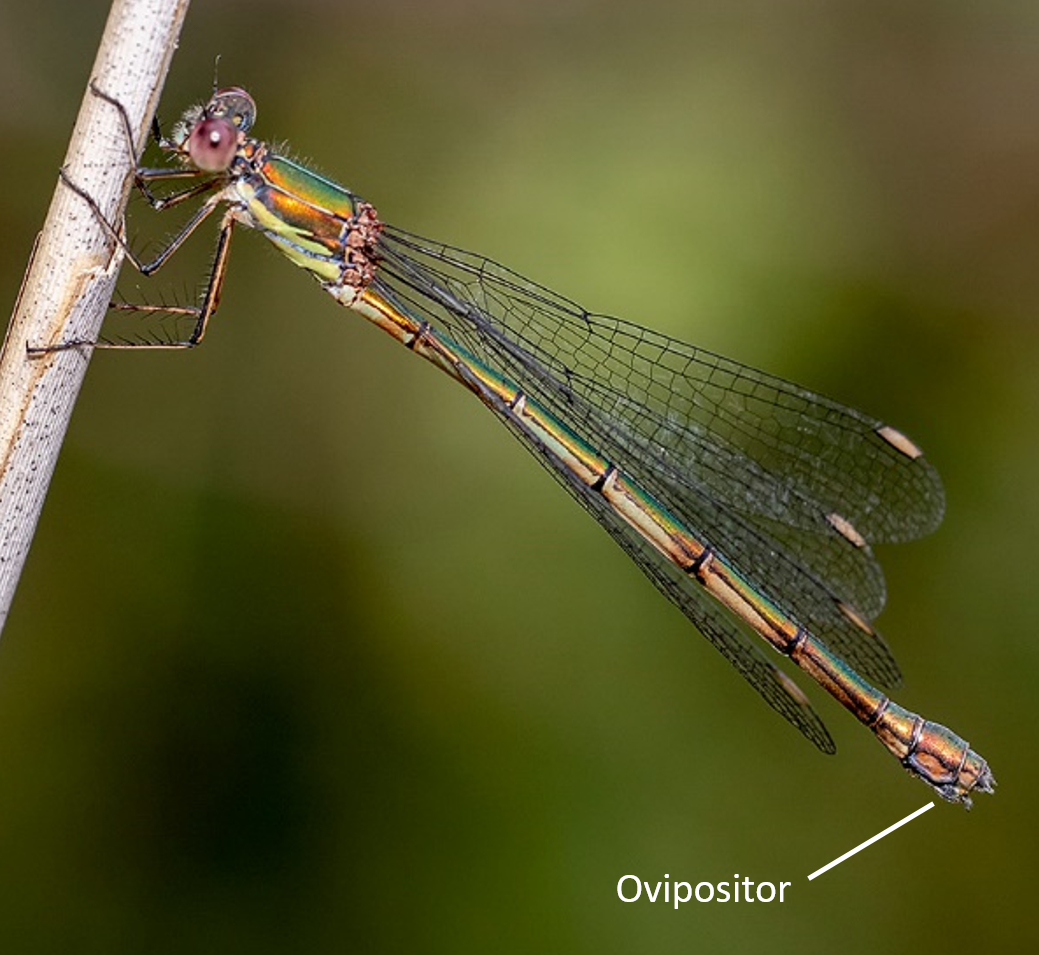Damselflies are insects in the sub-order Zygoptera (meaning “paired-wings”).
Characteristics of Damselflies
Body: Delicate and small.
Wings: Forewings and hind wings are the same shape.
Eyes: Separated on the head.
Behaviour: Weak flight. Usually rests with wings held against the body.


Azure Damselfly image by Christophe Brochard
Gender
Male
Accessory genitalia: Used for transferring sperm to the female during copulation. Located under segment 2 of the abdomen.
Anal appendages: Often prominent at the very end of the abdomen.


Male Emerald Damselfly image by Jörg Hempel


Male Emerald Damselfly image by Alastair Rae
Female
Ovipositor: Appendage used for egg laying. Located under segment 8-9 of the abdomen.
Anal appendages: Not prominent.


Female Emerald Damselfly image by Ouwesok, flickr


Female Emerald Damselfly image by Gail Hampshire
Age
In many species of Damselflies adults change colour as they mature.
Tenerals: Newly emerged adults are often paler in colouration with milky coloured wings.
Mature adults: In many Damselflies species, females change colour as they become sexually mature.


Teneral Male Blue-tailed Damselfly by Gail Hampshire


Mature Male Blue-tailed Damselfly by Stavros Markopoulos


Immature Female Blue-tailed Damselfly (violacea form) by Nutmeg66 flickr


Mature Female Blue-tailed Damselfly (infuscans form) by Gail Hampshire
Nationally Important Species
Endangered: Southern Damselfly Northern Damselfly
Near Threatened: Scarce Emerald Damselfly Scarce Blue-tailed Damselfly Variable Damselfly
Nationally Scarce: Small Red Damselfly
Title image: Large Red Damselfly by Rob, flickr
